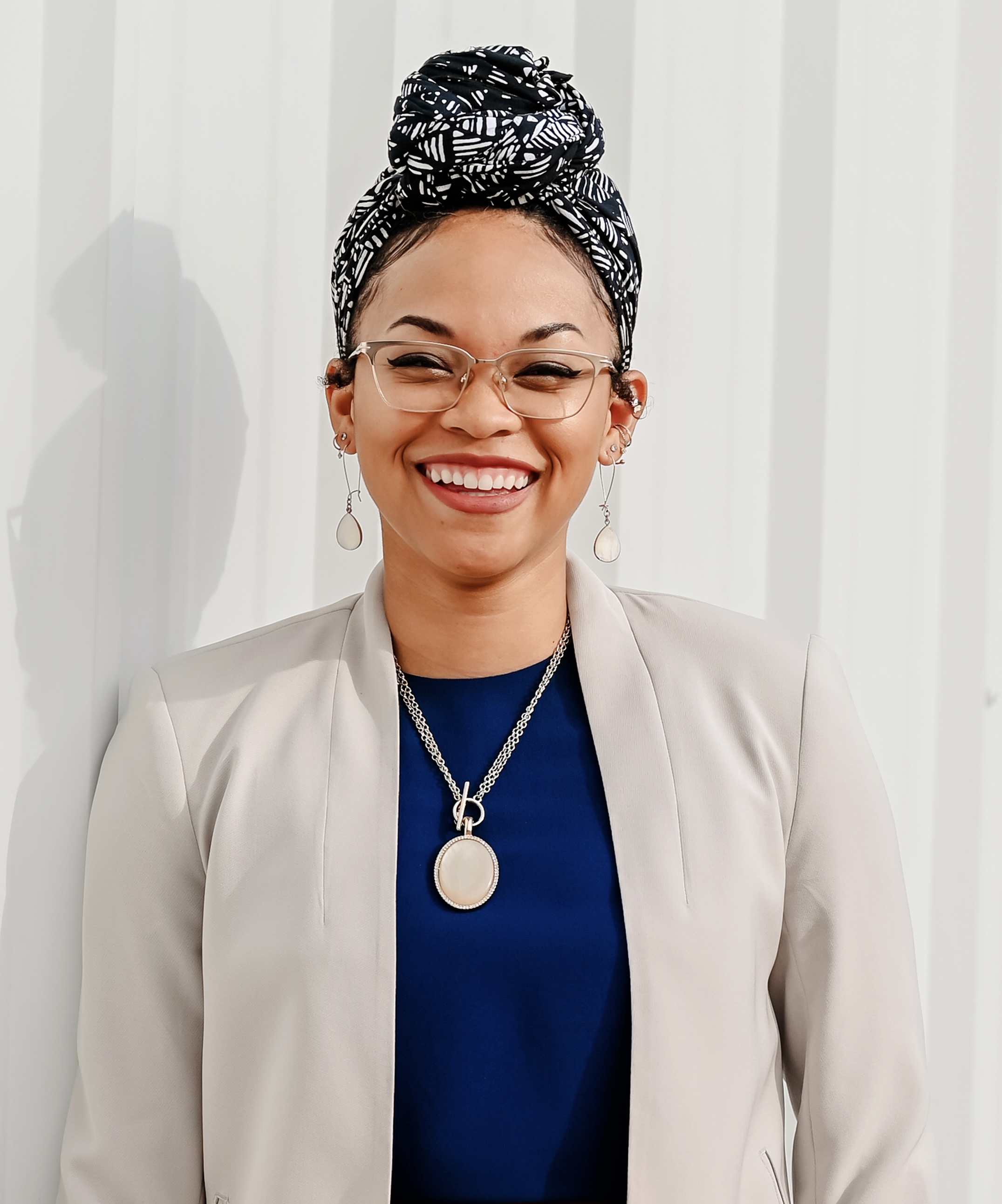
Female Leadership Wellbeing | How a US Navy Veteran Transformed Her Approach to Sustainable Leadership Without Burnout
What happens when a driven female leader realizes she's been setting the wrong example for her team?
I sat down with my friend, Navy veteran Rachelle Besaw, on episode 6 of The Prioritize Wellbeing for Female Leaders Podcast and learned that she discovered the answer during a pivotal conversation on deployment. While eating in the mess deck, a senior officer asked her a simple question that changed everything: "What are you doing to take care of yourself?"
Rachelle sat in complete silence. She had no answer.
"My entire being was ‘what am I giving to my qualifications? What am I giving to my sailors in my division?’ And I completely forgot that I was also a human being," Rachelle shared during our conversation.
The Hidden Cost of "Leading by Example"
For many female leaders, especially those from diverse backgrounds, the pressure to prove worthiness creates a dangerous cycle. Rachelle found herself staying late in the office, burning the candle at both ends, while simultaneously being tasked with holiday parties and extracurricular duties that weren't always valued equally with her male counterparts' responsibilities.
The wake-up call came when she realized her behavior was setting a harmful example for her team.
"I was setting a bad example for my sailors. I was being that person who, because the division officer was staying late and not leaving the office, then none of my sailors felt that they could leave or they could go to the gym," she explained.
The Leadership Wellbeing Connection
Rachelle's story illuminates a crucial truth about female leadership wellbeing: your self-care practices directly impact your team's performance and wellbeing.
During deployment, she made a conscious decision to change her approach. During the designated lunch hours from 11 to 1300, she would visibly go to the gym or practice yoga, showing her sailors that taking care of their physical and mental wellbeing was not just acceptable—it was expected.
"It was amazing because then I started to realize how many other eyes were watching me. I forgot that you really do set the example, even if I was…’just an ensign’," she reflected.
Navigating Cultural Code-Switching as a Leader
As a Menominee woman leading international military operations, Rachelle faced unique challenges that many multicultural female leaders recognize. At 24, she represented the US Navy Pacific region in strategic planning with senior officials from multiple countries—many of whom were uncomfortable with her age and gender.
"That negotiation really was finding ways in which we could work together for the benefit of all of us," she shared. "It's almost like code switching. You just really have to navigate those pathways."
This experience taught her valuable lessons about adapting communication styles without compromising her authentic self—skills that proved essential during her transition to civilian roles.
Transitioning Identity and Wellbeing Practices
When Rachelle left the military in 2022, she faced a perfect storm of changes: starting a PhD program, beginning a new relationship, moving cities, and transitioning from the rigid structure of military life to the flexibility of tech company culture.
The contrast was jarring. Her new boss didn't need hourly check-ins. She could take sick days without doctor's notes. The hierarchical structure she'd relied on for eight years suddenly disappeared.
"I missed the lack of structure," she admitted. "In the military, I had to put in a leave request. I had to tell them…, 'Hey, I'm feeling sick,' so I have to go to medical to get a doctor's note."
Reclaiming Cultural Identity as Wellbeing Practice
During this transition period, Rachelle discovered a powerful wellbeing strategy: reconnecting with her Menominee heritage. Through traditional crafts like beading and sewing, listening to lo-fi hip hop, and practicing smudging ceremonies, she created new outlets for the energy she'd previously channeled into caring for her sailors.
"I had to learn again how to take care of myself, but in a completely new and different type of way than I had before," she explained. "I was learning how to use these things, how to reclaim my culture to take care of myself in a better way."
This integration of cultural practices with contemporary wellbeing strategies created a holistic approach that honored both her heritage and her personal growth journey.
Recognizing Burnout Before It Derails You
Rachelle's early warning system for burnout is remarkably simple yet profound: when she starts borrowing trouble from the future.
"One of the first signs that I have is I start to borrow troubles from the future that haven't happened yet. So I start to think, 'Oh, what if this, what if that?'" she shared.
Her counselor helped her recognize this pattern with a powerful question: "Why are you borrowing trouble from the future? You already have enough troubles or problems that you're dealing with right now."
When she notices herself spiraling into "what if" thinking, Rachelle implements immediate wellbeing interventions: taking a walk, smudging, working out, or simply checking if she's met her basic needs.
"Maybe think of yourself as a houseplant. Have you gotten sunlight? Have you gotten watered?" she suggests with a laugh.
Building Community During Transitions
One of the most crucial elements of Rachelle's successful transition was finding community with other veterans at her tech company. Through their veterans network, she connected with others who understood the unique challenges of military-to-civilian transitions.
"The transition's hard for everyone. It doesn't matter how many years you served. You have to find community," she emphasized.
This support system helped her navigate not just professional changes, but the fundamental identity shifts that come with major life transitions.
The Potluck Test of Leadership
When asked about her favorite aspect of leadership, Rachelle's answer surprised me but was one I could easily relate to: potlucks.
"I love potlucks because when you're having a potluck with your division, your group, whoever you're having it with, you get to see your sailors, your airmen as who they truly are in a very comfortable place," she explained.
For Rachelle, these gatherings became a barometer of her leadership effectiveness. "If you're a good leader, it will show because your individuals will be comfortable and they're gonna be happy."
Practical Wellbeing Strategies for Female Leaders
Based on Rachelle's journey, here are key strategies for maintaining wellbeing as a female leader:
Set Visible Boundaries: Make your self-care practices visible to your team. Your wellbeing gives others permission to prioritize theirs.
Develop Cultural Intelligence: Learn to adapt your communication style while maintaining your authentic core. This isn't compromising yourself—it's strategic leadership.
Create Transition Rituals: Whether changing jobs or roles, develop practices that help you process identity shifts and redirect your energy constructively.
Find Your Community: Seek out others who understand your unique challenges, whether that's other veterans, leaders, or women in your industry.
Monitor Your Mental Patterns: Pay attention to early warning signs of burnout, like borrowing trouble from the future or neglecting basic self-care.
Integrate Cultural Practices: If you come from a diverse background, explore how your cultural traditions can enhance your wellbeing practices.
The Ongoing Journey
Rachelle's story demonstrates that sustainable leadership isn't about perfection—it's about continuous learning and adaptation. Even as a new mother completing her PhD while working full-time, she continues to apply these principles.
"You constantly have to check in with yourself. You constantly have to remind yourself—not only am I a leader of people, but I'm a person myself and I need to take care of myself so that I can take care of my sailors, my airmen, whoever I'm taking care of."
Her journey from a young officer who forgot she was human to a leader who integrates cultural wisdom with contemporary wellbeing practices offers hope for female leaders everywhere.
Your Wellbeing Journey Starts Today
Rachelle's transformation began with one person asking what she was doing for herself. Today, that question is for you:
What are you doing to take care of yourself?
If you're sitting in silence like Rachelle once did, you're not alone. The journey toward sustainable leadership and authentic wellbeing is ongoing, but you don't have to navigate it alone.
Remember: your wellbeing isn't selfish—it's strategic. Your team, your organization, and your community need you at your best. That starts with treating yourself as well as you'd treat the people you lead.
TL;DR: My friend, Navy veteran Rachelle Besaw learned the hard way that sustainable leadership requires prioritizing your own wellbeing. Her wake-up call came when a senior officer asked, "What are you doing to take care of yourself?" - and she had no answer. By making her self-care visible to her team, integrating her cultural identity into her wellbeing practices, and recognizing early burnout signals (like "borrowing trouble from the future"), she transformed from a leader who forgot she was human into one who models authentic, sustainable leadership. Key takeaway: Your wellbeing isn't selfish - it's strategic leadership that gives your team permission to thrive.
Ready to design simple, sustainable wellbeing solutions that you can implement today? Schedule a coaching call to get 20+ years of leadership experience in your corner, helping you create sustainable success without the burnout.
https://link.lsaglobal.net/widget/booking/yYwzEA4R6YwDtHS4DA2x
